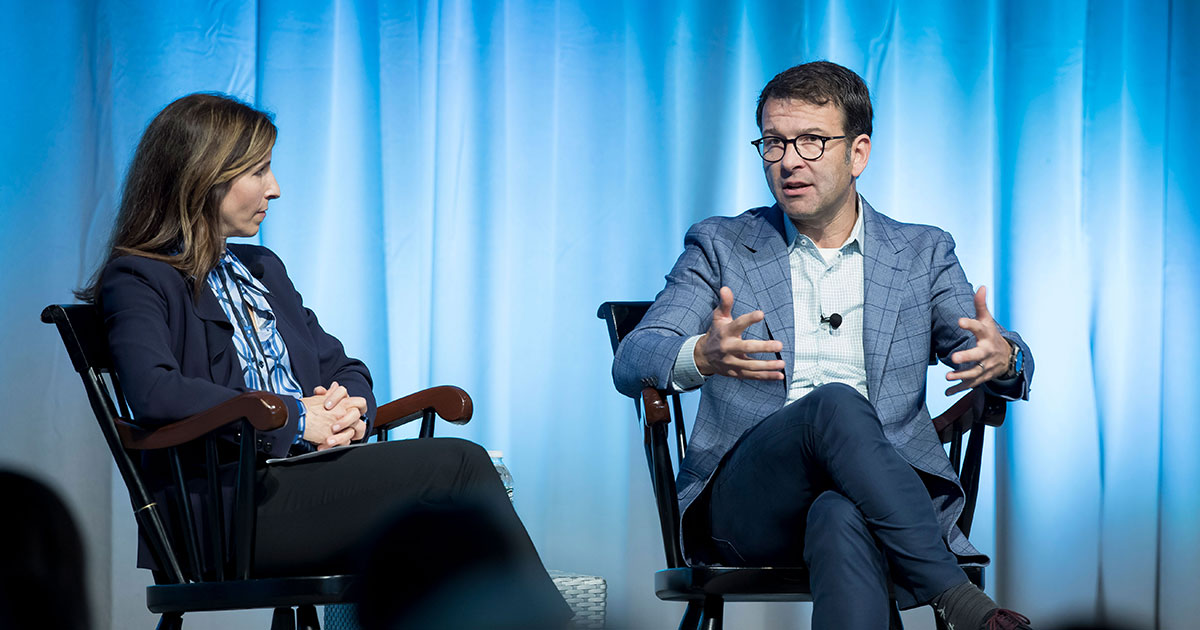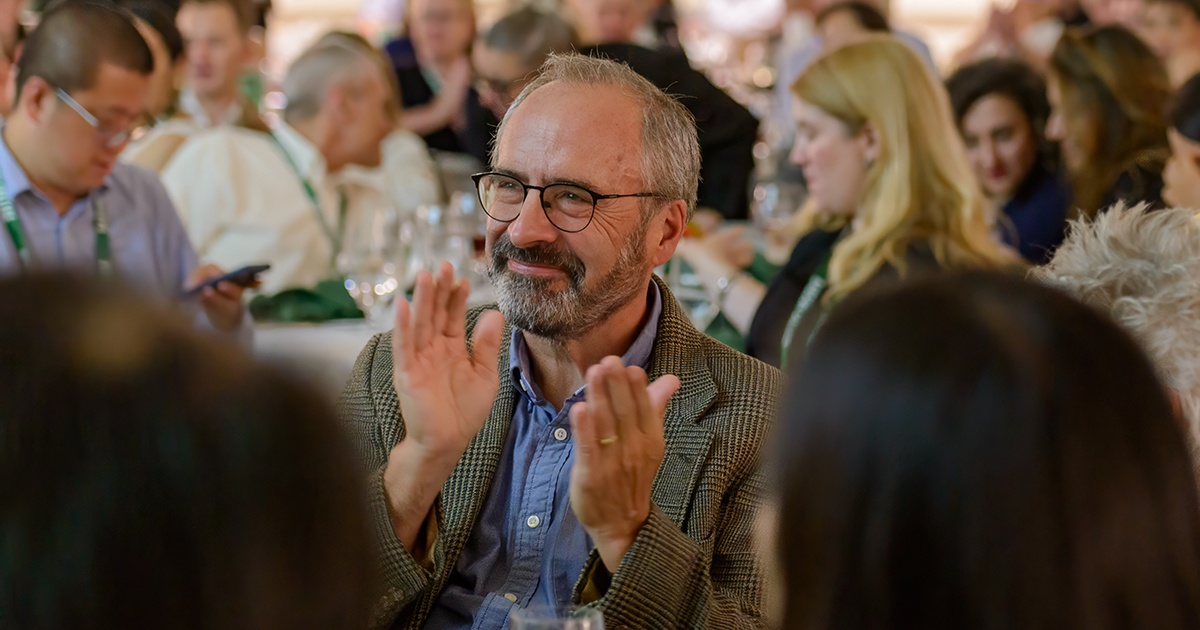How Microsoft Got Its Groove Back

Roughly 6.5 years ago, Judson Althoff P’22 joined Microsoft—the ’90s tech giant that had fallen far behind its competition in an age of digital revolution.
Althoff reported directly to Satya Nadella, the new, innovation-driven CEO who tasked him with leading a $90 billion arm of a $1 trillion company. Althoff quickly became an embodiment of a “trailblazing corporate entrepreneurial leader,” said Marla Capozzi MBA’96, chair of the Babson College Board of Trustees.
Capozzi and Althoff, executive vice president of Microsoft’s Worldwide Commercial Business, sat down for a candid conversation about change management during Babson’s recent Centennial Celebration. Capozzi characterized Althoff’s impact as helping to lead “the largest sales and commercial transformation in corporate history, and [he] did it overnight with immediate first-quarter results.”
For Althoff, remaining humble was the best way to enable a radical, worldwide change in Microsoft’s culture and direction. Initiated in 2014, this change proved necessary to the organization’s survival.
What is Our Purpose? What is Our Mission?
“Bill Gates’ original mission for the company was to put a PC on every desktop and in every household. So, you can pretty well go back and say, ‘Check, job done.’ But, then what? Our industry doesn’t really respect tradition, only innovation.”
By the time Althoff joined Microsoft, he said, “we had atrophied at the very core of what we do.”
What the world saw as a swift transformation under Nadella’s leadership, Althoff describes as a painstaking, yet well-thought-out, year of collaborative planning with an eye toward complete structural and cultural change.
“We sat back and did a lot of reflection about who we really are as a company,” said Althoff. “What is our purpose? What is our mission? Is it really about PCs anymore?”
During the course of 11 months, Microsoft invited more than 3,400 VPs and managers from across the world, and different lines of business, to engage in design thinking. “How could we use our own technology to have more effective reach?” The result was an entirely new commercial model.
Microsoft implemented “more change than the company had ever seen,” said Althoff, and it produced better financial results than ever before. “I credit it all to the people who leaned into that collaborative notion to creat[e] a company strategy, and the collaborative fabric that was built in the process.”
A Change in Direction Requires a Change in Perspective
Althoff described the atmosphere at Microsoft as being like “changing the engine on the airplane when you’re flying it.”
“You can’t exactly call up Wall Street,” he continued, “and say, ‘Hey, can you give us a break for a quarter or two . . . we’re going to make some changes over here. Trust us, everything will be fine.”
In order to create a growth mindset and shift culture across such a large organization, “leadership has to carry the baton,” he said. “You can’t simply print coffee mugs and T-shirts that say ‘growth mindset.’ You actually have to live it in every action, every communication, and every behavior.”
So, what did that mean for Microsoft? “Obsessing over customers . . . rewarding [employees] for customer results . . . acting as one Microsoft, [and] investing deeply in diversity and inclusion.”
Most importantly, said Althoff, “we had to back it up.”
Just Getting Started
When asked about fostering entrepreneurial leadership within large organizations, Althoff simply said, “It’s a never-ending cycle. Learning innovation is never done and you can’t be complacent.”
One way Microsoft keeps innovation and entrepreneurial thinking top of mind is by constantly questioning whether or not the company is reaching its potential.
“The bar for our mission statement is high,” said Althoff. “We’ll bring in customers [we] lost . . . we’ll have sobering sessions about things we could have done better . . . In that meeting, we will make budget and resource decisions, and think about how we can be better at everything we do.”
For him, it’s all about the conversation—one that, in six years, changed from offering or upgrading a suite of products, to discussing the many ways in which the company has put the power of technology in the hands of its customers, and enabled machine and human learning, systemwide improvements, cost savings, supply chain efficiencies, and overall quality control.
If we “learn at the pace of the digital revolution . . . we can harness that opportunity for the purpose of living true to the mission statement,” said Althoff. “We’re just getting started.”
Advice from Judson Althoff and His Experience at Microsoft
First, stay humble, said Althoff. “You can learn something from everyone you talk to, [and] from every situation.”
Second, “[stay] hungry . . . on business propositions and co-creation . . . and don’t become complacent. Your valuation today is immaterial if you’re focused on potential,” continued Althoff.
Lastly, “stay on the forefront of innovation. The company almost died because we stopped innovating. We milked assets we had . . . we missed the mobile generation. We did silly things to try to catch up instead of being focused on what customers want from us.”
“Any more advice for corporate entrepreneurs in the room?” asked Capozzi.
“Innovation can happen anywhere,” closed Althoff. “We’re a 40-year-old startup and we’re just getting going. If you look down the halls of your organizations . . . there are people that want to innovate . . . find that innovation, that spirit of entrepreneurs. Harness it. Nurture it. Feed. It. Reward failure, and more importantly, reward learning from failure.”
Posted in Entrepreneurial Leadership, Insights






